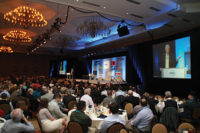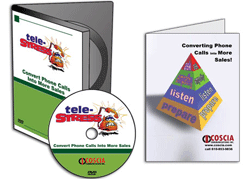Indeed, interacting with other members is the highlight of the conference for ASHRAE president, Tom Watson, P.E., who is also chief engineer at Daikin McQuay. “Whether I’m in a meeting or simply walking along the halls on my way to a tech session, it’s great to be able to reach out a hand and talk with people face-to-face. This year marks my 40th year of membership in ASHRAE, so going to the conference is like going to a family reunion.”
Educational opportunities still take center stage at the conference, though, and this year’s technical program will feature more than 200 sessions addressing energy conservation; facility management; large building design; standards, guidelines, and codes; HVACR systems and equipment; HVACR fundamentals and applications; and refrigeration. In addition, the ASHRAE Learning Institute will offer five new half-day short courses, including Air-to-Air Energy Recovery Applications: Best Practices, which will review real-world examples of where and how air-to-air energy recovery technologies are integrated into some of the most commonly used commercially available systems.
To help attendees use their time efficiently at the conference, ASHRAE is developing a new mobile phone app specifically for the event. ASHRAE members will be able to follow all the sessions, committee meetings, and other conference events through the new app, which can be used on iOS and Android mobile devices. The app will also feature an “on-the-move” scheduling assistant, a communication portal to network with other ASHRAE conference attendees, and links to exhibitors and floor plans for the AHR Expo.
For complete conference information, including abstracts on all technical program sessions, or to register, visit www.ashrae.org/dallas.
Contractors Welcome
HVACR contractors who think the Winter Conference is primarily for mechanical engineers may want to reconsider that notion, as attending the conference provides a great opportunity to get directly involved in committee work. As Watson noted, “The more the contracting community gets plugged into the inner workings of ASHRAE, the more they can influence the direction of the society that impacts their work most directly through energy, comfort, IAQ standards, research, and publications.”
Watson added that ASHRAE is particularly relevant to contractors today, as the design and construction trades are seeking better collaboration through integrated project delivery contracts, building information modeling (BIM), etc. “The engineering community needs to hear contractor perspectives and vice versa, and there’s no better place for that than the Winter Conference.”
There are numerous courses designed to pique contractors’ interest at the conference, including a new one titled, Combined Heat and Power: Design through Operations, which will focus on the successful implementation and operation of a cogeneration plant. “The presentation will progress from design through construction and operations and conclude with three case studies,” said Watson.
Other sessions that will be of interest to contractors, noted Watson, include Future Directions in Sizing Residential and Small Commercial HVAC Equipment, which will focus on the key issues related to the sizing of modern residential and small commercial HVAC equipment; Zero Refrigerant Emissions: What’s Changing in the New Standard, which will cover the changes to ASHRAE Standard 147, Reducing the Release of Halogenated Refrigerants from Refrigerating and Air-Conditioning Equipment and Systems; and BIM for Dummies, which will bring together three international experts to provide an overview of BIM concepts, information exchange standards, and practical application in a real building project.
ASHRAE Technical Committee (TC) 7.2, HVACR Contractors and Design Build Firms, will also be sponsoring sessions in the technical program that will appeal to contractors, stated Watson, including Public Schools: Energy Conservation Methods that Lead to Superior Returns. Another seminar, The Road Less Traveled Becomes a Highway: Design-Build Execution of Cleanroom Projects, will present samples of cleanroom projects that were designed using a design-build approach.
Contractors who do not sign up for the technical program are welcome to attend the free public session that ASHRAE is offering at the AHR Expo, titled Basics of HVAC Noise Control. As Watson explained, designing HVAC systems with good acoustic performance can be a challenge, and the free session will address three common issues to improve acumen for sound and vibration, including the technical nuances of selecting fans that optimize acoustic and energy performance. No badge is required to attend, and the public session will take place Tuesday, Jan. 29, 2-3:30 p.m. at the Dallas Convention Center.
Looking Ahead
While the conference provides a great opportunity to learn all about new technologies, it also provides a perfect setting to discuss other pressing issues. Not surprisingly, the economy remains a major concern for the HVAC industry, said Watson, who added that ASHRAE members hope that the post-presidential election situation will lead to investment in improvements to existing building stock and in new construction.
“It’s likely that developers, architects, and owners will remain cautious with their funds, so our members should look at marketing themselves as a value-added service. Our members have the knowledge to advise the architects and general contractors as they make decisions on the building envelope — such as improving energy efficiency, occupant comfort, and productivity — not just on the HVACR systems. Engineers have traditionally been content to work in the background, but if we are to better weather these sluggish economic times, we better promote how we can improve the entire built environment.”
Standards will also be a strong focus in 2013, as ASHRAE is looking at how they can be used to combine technology, applications, and people to develop stronger, more sustainable communities, noted Watson. “In 2013, we will publish the newest versions of our major standards, including standards related to energy efficiency (ANSI/ASHRAE/IESNA Standard 90.1, Energy Standard for Buildings Except Low-Rise Residential Building), sustainability (ANSI/ASHRAE/USGBC/IES Standard 189.1, Standard for the Design of High-Performance, Green Buildings Except Low-Rise Residential Buildings), and indoor air quality (ANSI/ASHRAE Standard 62.1-2007, Ventilation for Acceptable Indoor Air Quality). These standards, and the changes they will incorporate based on input from the industry, will continue to improve our building stock.”
To learn about the latest updates to these standards, ASHRAE is offering a new technical program session at the conference. The Dallas Conference breaking news on 90.1, 62.1, and 189.1 will take place on Monday, Jan. 28, from 2:30-4 p.m., and chairmen of those standards committees will report on the actions they have taken during their meetings at the Dallas Conference. “The updates will provide current and valuable news that attendees can take back to their offices, such as what new addenda, interpretations, and public reviews are planned,” explained Watson.
With all the wonderful educational and networking opportunities available, Watson believes that the Winter Conference will appeal to just about any professional in the HVACR industry. “It is the perfect place to bring together ASHRAE members, as well as non-members, from far and wide to share information on best practices. This helps advance the industry, as attendees can discuss the technology needed to move our standards, research, publications, etc. forward. You can’t miss the opportunity to learn from so many members in one place.”
SIDEBAR: Technical Tours
ASHRAE Conference technical tours provide attendees with a first-hand look at technology developed by members to further the industry. This year’s tours include:
• Southern Methodist University, which is harnessing the power of steam, water, and sunlight to heat and cool most of the buildings on campus. SMU uses wind-generated electricity, as well as a photovoltaic system that features a 15,300W grid, with 68 enphase micro-inverters and 68 REC 25W solar panels. The central plant produces and distributes chilled water, steam, and compressed air to over 70 main campus buildings. The tour will take place Tuesday, Jan. 29, at 1 p.m. and 2:45 p.m.
• Baylor University’s Charles A. Sammons Cancer Center, which is the first dedicated cancer hospital with the largest outpatient cancer center in North Texas. The center features “living walls,” which are vertical gardens that improve IAQ by moderating temperature and humidity levels, as well as filtering the air. The center also features an open platform automation system integrating HVACR, electrical, lighting, and life safety; and two large 770-ton centrifugal chillers with free cooling. This tour will take place Sunday, Jan. 27, from 1:30-4 p.m.
• Dallas Cowboys Stadium, which features the largest retractable roof, the largest column-free interior, and the largest high definition video screen in the world. The tour includes stops at a private suite, the print media press box, the Cotton Bowl office vestibule, and the Dr. Pepper Star Bar or the Ford Motor Company Fountain. The tour will also include information on the mechanical systems, which include 11,000 tons of cooling capacity, 94 air handling units, 10 miles of hydronic piping, and 25 million pounds of ductwork. This tour will take place Monday, Jan. 28, from 2:30-5:30 p.m.
Publication date: 1/14/2013












